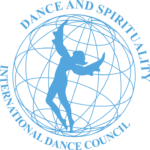SIERRA LEONE
Sierra Leone is a small west African country on the Atlantic coast. It is home to many different ethnic groups, the two biggest being the Temne and the Mende. A lot of these communities practice their spiritualities to this day.
The culture of Sierra Leone is particularly diverse. Archeologist studies show that indigenous populations such as the Temne and Limba lived in the country for thousands of years, with other groups immigrating afterwards. This diversity led to Sierra Leone being a complex mosaic of different kingdoms. Sierra Leones access to the Sea, especially in the Region of its capital Freetown, allowed trade to flourish, which subsequently lead to the importation of different forms of spirituality. Muslim traders and Christian settlers both brought their religion to the country. It is also important to mention Voodoo, which plays an important role within some ethnic groups. Freetown was also a destination for liberated slaves, which created diasporas from countries around the world.
Music and dance have always been a big part of cultural expression in Sierra Leone. People such as the Temne et Mende use dance to accompany all passages of life. Dancing is of course used to celebrate certain events such as marriages but is also used in more spiritual contexts. It is important to note that a lot of communities such as the Mende contain secret societies such as the Poro and Sande, which hold a lot of political and social importance. The initiation in these societies is very demanding, an contains numerous dances to accompany the future members on their journey. Furthermore, dance is also used for harvest festivals and healing rituals.
On the other hand, popular music from Sierra Leone also offers an interesting blend of native, Portuguese, British, French and creole instruments and motives. An interesting example can be the genres of palm wine music or Gumbe, which mix traditional and creole elements with Portuguese instruments. These genres are very well liked and danced to across the country.
References
List of Dances
NDOLI JOWEI
This Dance of the Mende people is one of the only mask dances of Africa, that is exclusively danced by women. Within the Mende people exist two separate secret societies: the Poro for the men and the Sande for the Women.
The sowei mask, which is only accessible to women who belong to the Sande, embodies the beauty standards of the Mende people: it has long hair, defined facial features and a ringed neck. The mask is worn along with a large black costume covering the entire body of the woman. The mask bearer, who is referred to as the Ndoli Jowei, must be one of the highest-ranking members of the Sande society. Besides the mask bearer, other members of the Sande participate in some of the dances.
The dance takes place during certain phases of a young girl’s initiation into the Sande society. Because it is seen as essential that the community celebrates this initiation, dance is an integral part of the process. Oftentimes, the danse is also a way to ask the locals for food offerings to support the girls undergoing the initiation, which involves the excision of their clitoris and parts of their labia. Once the initiation is completed, the girls are now part of the Sande and enjoy a higher social status. In the final part of this process, the new members paint their faces white and dance to complete the ceremony.
Besides these kinds of initiations, the dances including the sowei mask are also performed at less religious festive events.
The reports about the frequency of the ceremony seem to vary; it appears to be celebrated quite rarely, either once a year or once every seven years. The ceremony can last up to seven days, in which the music is not to be interrupted. The mask of Kakilembe is only to be handled by elders, dropping it on the ground is a sign of bad fortune. For each family of community, a string is attached to the mask. The ceremony grants the community good crops, fertility and protects them from famine and disease.
The rhythm of the music is played on various percussion instruments, including djembes. The time signatures can be 12/8, 6/8 or 4/4. The tempo varies a lot; during moments with slow tempo, the priest of the community communicates with Kakilembe. When he transmits what he heard from the deity to the village, the tempo accelerates and can be up to three times faster than before.
Sierra Leone
Ethnic Group: Mende
Region: Sierra Leone: southern and eastern province
Pays: To be checked!

